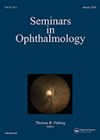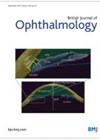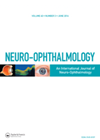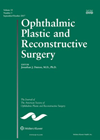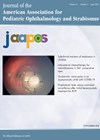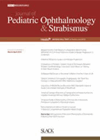
Journal Reviews archive for February 2022
Does lower eyelid entropion repair alter corneal topography?
The authors aimed to analyse the corneal morphology before and after advancement of posterior lower eyelid retractors (LERs) alone or in combination with a lateral tarsal strip (LTS) for lower eyelid involutional entropion. Retrospective analysis of 24 consecutive elderly patients...
Amniotic membrane transplantation for SJS/TEN
This is a retrospective study of consecutive patients who underwent amniotic membrane transplantation (AMT) in the acute stage of Stevens-Johnson syndrome (SJS) / toxic epidermal necrolysis (TEN) from Toronto, Canada, between 2009 and 2018 and had more than three months...
A novel approach to suprachoroidal haemorrhage drainage
The authors describe a novel surgical technique for external drainage of choroidal detachment / suprachoroidal haemorrhage with a butterfly needle. Six eyes with serous and / or haemorrhagic choroidal detachments (five from complicated cataract surgery with vitreous loss, one globe...
Factors influencing the outcome of GT and TBT in PCG
This is a retrospective study between 2013 to 2016 of 452 eyes of patients </=12 years with primary congenital glaucoma (PCG), who underwent either goniotomy (GT) (median age: six months, 120 eyes) or trabeculotomy (TBT) (median age: 5.2 months, 332...
Long-term use of botulinum toxin for hemifacial spasm and blepharospasm
The authors conducted a retrospective review of clinical / procedure documentation for consecutive blepharospasm (BEB) and hemifacial spasm (HFS) patients undergoing treatment with onabotulinum toxin A (Botox) in one clinic setting over the past 20 years. They report on the...
Case reports of ‘ictal lid saccades’ and ‘ictal blinks’
The authors present two cases of lid movements with discrete physiology and propose the terms ‘ictal lid saccades’ and ‘ictal blink’ to describe the movements seen. These two types of lid movement, blinks and saccades, have discrete kinematic properties and...
Lagophthalmos as a potential complication of COVID-19
Lagophthalmos is a condition associated with the inability to close the eyelids effectively, with the main cause being facial nerve palsy. The authors aimed to investigate whether lagophthalmos was associated with coronavirus infection (COVID-19) by comparing patients diagnosed with lagophthalmos...
Frontalis muscle flap for congenital ptosis
This is a review of 43 patients (47 eyes) with severe congenital ptosis who underwent a suspension procedure using a frontalis flap technique. The average age of patients was 6 +/-2.5 years, and all had a severe ptosis with an...
Diplopia after orbital decompression
This is a review of patients undergoing a balanced two-wall and fat orbital decompression to identify risk factors for new onset diplopia. Standard decompression techniques were used, but as the surgery was conducted by ENT surgeons, the medial walls were...
At what age do children start to negatively judge ptosis?
The authors present a cohort study to assess for the presence of peer bias against ptosis. Recruitment took place in nursery and primary schools, of children aged three to six-years-old. An exclusion criterion was the presence of a visible ophthalmic...
Factors leading to loss to follow-up after strabismus surgery in children.
One hundred and fourteen patients were identified as lost to follow-up between 2014 and 2020, representing 16% of paediatric strabismus surgery performed during this time period. The authors specifically defined lost to follow-up as not attending follow-up appointments between three...
Accuracy of ASOCT muscle insertion measurements
Anterior segment optical coherence tomography (ASOCT) is a non-contact imaging method that can provide accurate measures of extraocular muscles to limbus insertion distances. The authors evaluated the accuracy of ASOCT for locating horizontal extraocular muscle insertions after strabismus surgery in...

